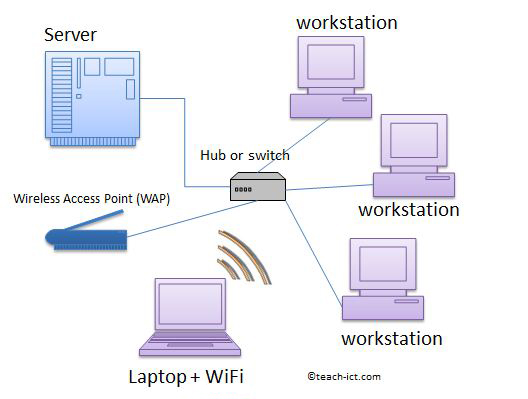4. Network operating systems
These days it is quite common to have your computer attached to a network of some kind.
 For example most of the computers in school will be networked. Most of the computers in companies will also be networked and even at home you may have two or more computers networked together so they can share the internet connection.
For example most of the computers in school will be networked. Most of the computers in companies will also be networked and even at home you may have two or more computers networked together so they can share the internet connection.
All these machines need to have an operating system that can deal with the network.
Examples of a network operating system include Windows and Mac OS X and of course all the mainframe operating systems.
A network operating system has to have the following features
- Deal with users logging on.
- Maintain the network connection to the server(s)
- Expand the file system to view folders on other computers
- Provide security to separate user accounts from each other.
When the user logs on, they will provide an username and password. This is checked by the operating system.
With a network operating system, you will have access to a network drive where your files and folders will be stored. You will usually also have access to a shared drive where you can use and share files with other people on the network. These drives appear as extra letters, perhaps W drive or S drive. As far as you are concerned, as a network user, they are appear to be an extension of your local hard disk. You can read and write to the folders as if they are on your own machine (as long as the network administrator has set up your file permissions to allow you to do this.)
There may be many users making use of the same machine (not at the same time). Think about the computers at school. You might use a computer in room A for your ICT lesson. You log off, and the next class arrives and a different student logs onto the same computer. This happens many times throughout the week. This is *not* a multi-user system, because the processing power of the machine is only being used by one person at a time.
Challenge see if you can find out one extra fact on this topic that we haven't already told you
Click on this link: Network Operating System
